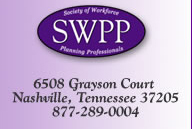 |
||
|
Question: We seem to be having a lot of trouble with our current WFM software system. It won’t do things the way we want and we can’t seem to get the reports we need. We are thinking we should change to a different vendor to resolve our problems. What do you recommend? Answer: Unfortunately, the issue you raise is not unusual and it is not unique to WFM software systems. Too often the products don’t seem to do what we want or do them in a way that fits our needs and the only way to resolve the issues seem to be replacement. However, we would urge caution to avoid “throwing the baby out with the bathwater.” In our experience, the challenges are often a combination of the following:
The cost of replacing a system includes not only the investment in the new product, but the pain and time involved in the project to do the RFP, analyze the choices, and manage the implementation project. The staff will all need to be trained on the new product and some procedures in the center will likely need to change as well. So before you take this on, you will want to make a definitive list of the issues. Put all of the features and functions that are working well and you would not want to lose on one sheet. It is easy to assume that if one vendor does something that you like/need that others will have it too and that is not necessarily true. Then put all of the things you want you are not now getting on another. Make sure your team is in consensus on these lists. Share these lists with your current vendor to see if you can resolve the bulk of them to your satisfaction. If you can’t, then you have the basis for your RFP. Just be careful in the process that you don’t just trade one set of problems for an entirely different set! Question: In recent articles I’ve seen that AHT calculations should include the components of talk time + after-call work time. Shouldn’t hold time be included in the AHT number too since it is time that staff are being utilized during a call? Answer: Yes, hold time should be included as part of agent workload. Sometimes we use “talk time” to refer to the end-to-end live time with the caller, but it doesn’t mean just the time when conversation is happening. It includes anything that happens during that talk time, which can often include time the caller is put on hold. So the real calculation for AHT should be talk time + on-hold time + after-call work. However, the time that the caller is on hold waiting for the call to begin (before the agent picks up the call) is not included. So do you have thoughts about industry standards? I’d love to hear from you! Send me an e-mail at vicki.herrell@swpp.org. Copyright ©2008 Society of Workforce Planning Professionals. All rights reserved.
|
||
